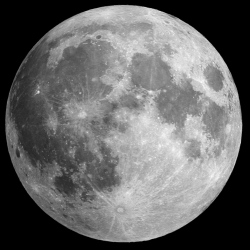
Lockheed Martin has a deal with Nasa to deploy the SkyFire 6U cubesat in 2018. Once launched, SkyFire’s infrared camera will take images and help Nasa in expanding knowledge of the moon’s surface.
Part of Nasa’s Next Space Technologies for Exploration Partnerships (NextSTEP) programme, SkyFire will be launched with 12 other cubesats on EM-1. Lockheed Martin SkyFire principal investigator James Russell said: “The CubeSat will look for specific lunar characteristics like solar illumination areas.
“We’ll be able to see new things with sensors that are less costly to make and send to space.” Depending upon the success of the mission, the infrared system on SkyFire will be used for inexpensive studies of a planet’s resources before humans arrive in future.
The studies include different tasks such as analyzing soil conditions, determining ideal landing sites and discovering a planet’s most livable areas. SkyFire will also demonstrate a low thrust electric propulsion rocket engine technology called electrospray propulsion to lower the spacecraft’s orbit for more science and technology mission objectives
Its purpose is that of a Geosynchronous Earth Orbit (GEO) technology demonstration using a low-cost 6U CubeSat spacecraft. SkyFire will perform a lunar flyby, collecting spectroscopy and thermography for surface characterization, remote sensing, and site selection. The spacecraft includes two deployable solar arrays and will have a total mass of about 14 kg (31 lb).
One of the CubeSats, Lunar Flashlight, will go into polar orbit less than 20 miles above the moon by deploying a solar sail It will be a 860-square-foot solar sail as a makeshift mirror. Lunar Flashlight will shine sunlight into permanently dark craters at the moon’s south pole, where temperatures hover just above absolute zero, cold enough to lock deposits of water ice over billions of years.
Locating ice deposits in the moon’s permanently shadowed craters addresses one of NASA’s Strategic Knowledge Gaps (SKGs) to detect composition, quantity, distribution, form of water/H species and other volatiles associated with lunar cold traps. The scientific and economic importance of lunar volatiles extends far beyond the question “is there water on the moon?” Volatile materials including water come from sources central to NASA’s strategic plans, including comets, asteroids, interplanetary dust particles, interstellar molecular clouds, solar wind, and lunar volcanic and radiogenic gases.
The volatile inventory, distribution, and state (bound or free, evenly distributed or blocky, on the surface or at depth, etc.) are crucial for understanding how these molecules interact with the lunar surface, and for utilization potential.
The Lunar Flashlight mission spacecraft maneuvers to its lunar polar orbit and uses its near infrared lasers to shine light into the shaded polar regions, while the on-board spectrometer measures surface reflection and composition. The Lunar Flashlight 6U spacecraft has heritage elements from predecessor systems including JPL’s INSPIRE and JPL’s experience with imaging spectrometers, including the Moon Mineralogy Mapper (M3).
The mission will demonstrate a path where 6U CubeSats could, at dramatically lower cost than previously thought possible, explore, locate and estimate size and composition of ice deposits on the moon. It is a game-changing capability for expanded human exploration, planetary science, heliophysics, and other relevant instrument applications.
Polar volatile data collected by Lunar Flashlight could then ensure that future exploration targets for more expensive lander- and rover-borne measurements would include volatiles in sufficient quantity and near enough to the surface to potentially be operationally useful.
